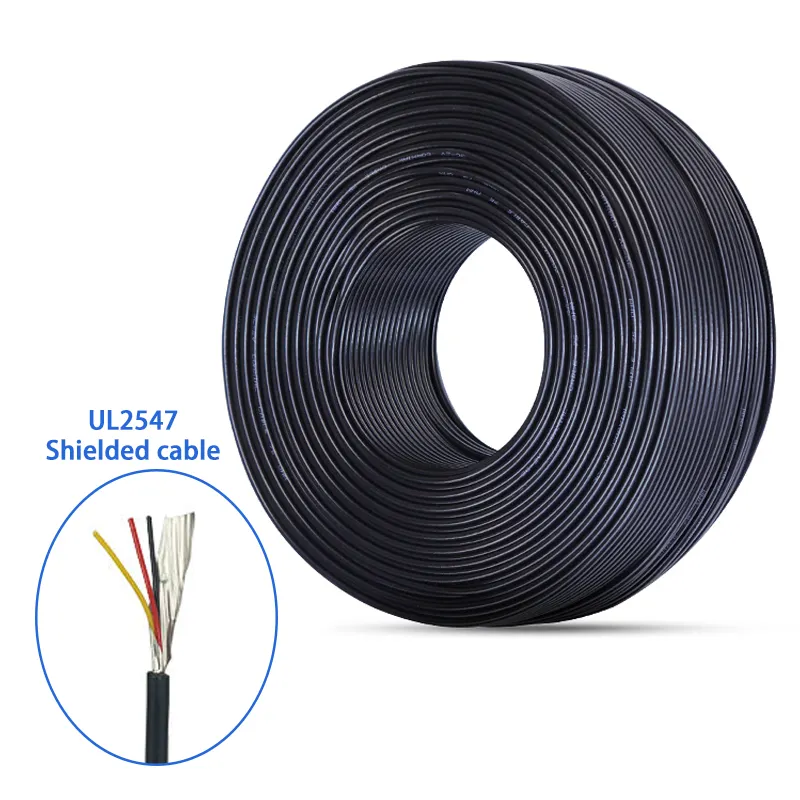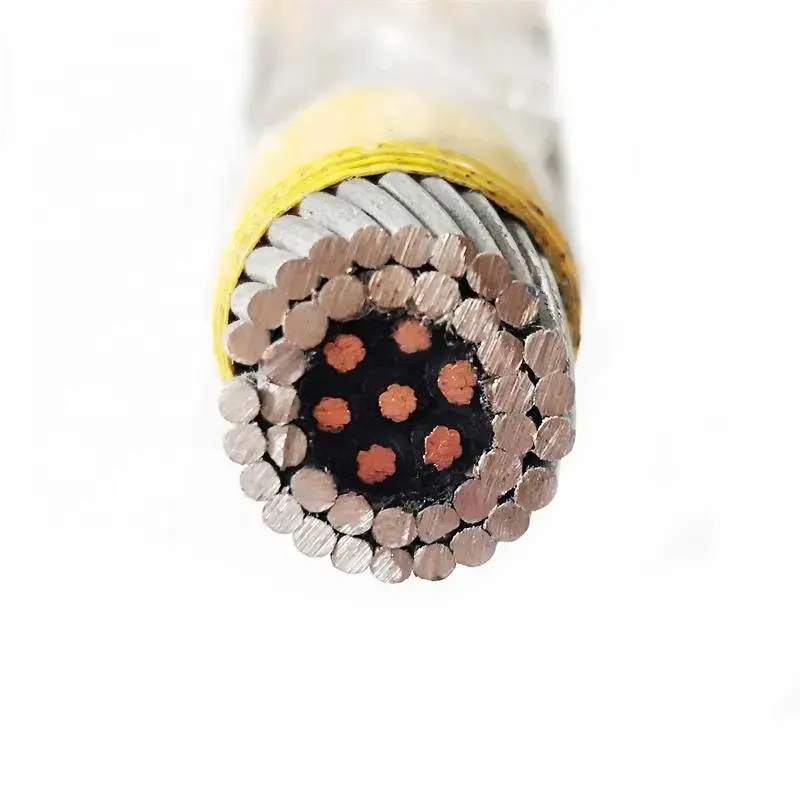SPT-2 лампы шнур с 18/2 датчик медный Электрический
- Категория: Electrical Wires >>>
- Поставщик: Dongguan,Connexions,Electronic,Technology,Ltd.
Поделиться:
Описание и отзывы
Трекер стоимости
| Месяц | Минимальная цена | Макс. стоимость |
|---|---|---|
| Sep-17-2025 | 0.99 $* | 0.90 $* |
| Aug-17-2025 | 0.10 $* | 0.11 $* |
| Jul-17-2025 | 0.91 $* | 0.19 $* |
| Jun-17-2025 | 0.79 $* | 0.45 $* |
| May-17-2025 | 0.71 $* | 0.11 $* |
| Apr-17-2025 | 0.2 $* | 0.97 $* |
| Mar-17-2025 | 0.43 $* | 0.70 $* |
| Feb-17-2025 | 0.78 $* | 0.98 $* |
| Jan-17-2025 | 0.94 $* | 0.11 $* |
Характеристики
Products Description
Connexions produces Power Cable with extensive experience more than 17years. Our SPT-2 Lamp Cord is with two cores of bare copper wires. It is safe and high conductivity, bending-resistant and UL compliant. We have been devoting ourselves for high quality products and best customer service. All the wires are produced under ISO9001 quality management system and 100% in-house tested before shipment. CTC Connexions will be your trusted long-term cooperated manufacturer in China.
1.Product Introduction of the SPT-2 Lamp Cord
CTC SPT-2 Lamp Cord is designed for household appliances including clocks, radios, lamps, and fans. It has a 300-volt maximum voltage rating and features two conducting copper wires. Its two stranded copper conductors are insulated in PVC. SPT-2 Lamp Cord has thicker insulation than SPT-1 Lamp Cord. SPT-2 Lamp Cord products are the thickest and lowest amperage of the three types of UL SPT cords. It has an insulation thickness of .045″ and it is constructed in accordance with UL standards. SPT-2 Lamp Cord is water-resistant, sunlight-resistant and designed to withstand severe environmental conditions. SPT-2 Lamp Cord also withstands exposure to oil, acids, alkalies, heat, flame, moisture and chemicals. Meets or exceeds flame test requirements of UL.
2.Product Parameter (Specification) of the SPT-2 Lamp Cord
Specification | SPT-2 Lamp Cord |
Standard | UL62 # E257925 |
Conductor Metal | Bare Copper |
# of Conductors | 2 |
Conductor Type | Stranded Conductor |
Conductor Shielding Type | Unshielded |
Insulation Material | PVC |
Available Color | Black, White, Gold, Sliver |
Available Gauge | 18AWG |
Amps | 10 |
Available Length | 8 feet,12 feet or customized length |
Nominal Voltage | 300V |
UL Temperature Rating | 105C |
3.Product Feature And Application of the SPT-2 Lamp Cord
Color Lamp Cord Set is an excellent quality plastic covered power cord great for table lamp repair and lamp cord replacement.
SPT-2, 18/2 gauge copper electrical wire, rated 105°C, Lamp Repair Wire, 8 feet or 12 feet long power cord with molded end plug, polarized blades, great lamp parts.
Cord ends are stripped and tinned on the tips to avoid unraveling and make for easy wiring onto the lamp socket.
Great for repairing or refurbishing old lamps and perfect making new lamps with your own lamp socket.
Factory assembled and UL Certified.
Color Lamp Cord Set is an excellent quality plastic covered power cord great for table lamp repair and lamp cord replacement.
SPT-2, 18/2 gauge copper electrical wire, rated 105°C, Lamp Repair Wire, 8 feet or 12 feet long power cord with molded end plug, polarized blades, great lamp parts.
Cord ends are stripped and tinned on the tips to avoid unraveling and make for easy wiring onto the lamp socket.
Great for repairing or refurbishing old lamps and perfect making new lamps with your own lamp socket.
Factory assembled and UL Certified.
4.Product Details of the SPT-2 Lamp Cord
5.Product Qualification of the SPT-2 Lamp Cord
UL#E257925 Reach RoHS ISO9001-2015
6.Deliver,Shipping And Serving of the SPT-2 Lamp Cord
Large production capacity and capability with more than 17 years experience on wires and cables. Normally 3days for in stock cables and 7-10days for customized cables.
Online customer service to support all your inquiry or questions.
5.Product Qualification of the SPT-2 Lamp Cord
UL#E257925 Reach RoHS ISO9001-2015
6.Deliver,Shipping And Serving of the SPT-2 Lamp Cord
Large production capacity and capability with more than 17 years experience on wires and cables. Normally 3days for in stock cables and 7-10days for customized cables.
Online customer service to support all your inquiry or questions.
Company Profile

Shipping & Payment

FAQ
1)Are you a manufacturer?
Yes, our company is a professional wires and cables manufacturer with 17 years of experience.
2) Do you accept OEM and ODM?
We accept OEM order for our customers, and we also have a strong research development team to design specialized wires and cables for ODM.
3)Are these products quality assured ?
Most of cables are certificated. Also, we have strict QC under ISO9001-2015 quality management system, all products are 100% tested before delivery. Quality is assured.
4)Is the product UL certificated?
Yes, the product is UL certificated with UL62 # E257925.
5)What gauge is a lamp cord?
The gauge of a conducting wire is a measure of its cross-sectional area, and lower gauge numbers signify larger-diameter wires. This is because the original method of measuring wire diameter was to pull wires through a presized hole, and the thicker the wire, the fewer strands could be bundled together to fit. The wires that power the receptacles and light fixtures in a typical house are either 12- or thinner 14-gauge, and those in lamp cords are even thinner 18-gauge ones. Unlike typical cables in a home's electrical system, lamp cords usually contain stranded wire, which is wire made of several thin filaments bundled together.
6)What is the requirements for a Lamp Cord?
The 18-gauge wire inside a lamp cord is rated for a maximum current draw of about 5 amps. That's more than enough for a typical 120-volt lightbulb -- or even several of them. The power that a load consumes equals the amount of current flowing to the load multiplied by the voltage of the electricity supply. A 60-watt bulb that runs on 120-volt electricity therefore only draws a 1/2 amp of current. If the same bulb runs on 12-volt power, however, you should upgrade the cord to 16- or even 14-gauge to avoid voltage drops and dim lights.
7)How to buy a Lamp Cord?
When you go to the electrical supply outlet for your replacement cord, you'll have the choice of cutting a custom length from a roll and attaching your own plug or buying a precut cord with the plug already attached. You may find cords with polarized plugs that have different-sized prongs. While there is no harm in using polarized plugs and cords, not every lamp requires them. Moreover, some outdoor lamp fixtures may have a ground terminal. If so, you need a three-prong plug and a cord that includes two conducting wires and a ground wire.
Yes, our company is a professional wires and cables manufacturer with 17 years of experience.
2) Do you accept OEM and ODM?
We accept OEM order for our customers, and we also have a strong research development team to design specialized wires and cables for ODM.
3)Are these products quality assured ?
Most of cables are certificated. Also, we have strict QC under ISO9001-2015 quality management system, all products are 100% tested before delivery. Quality is assured.
4)Is the product UL certificated?
Yes, the product is UL certificated with UL62 # E257925.
5)What gauge is a lamp cord?
The gauge of a conducting wire is a measure of its cross-sectional area, and lower gauge numbers signify larger-diameter wires. This is because the original method of measuring wire diameter was to pull wires through a presized hole, and the thicker the wire, the fewer strands could be bundled together to fit. The wires that power the receptacles and light fixtures in a typical house are either 12- or thinner 14-gauge, and those in lamp cords are even thinner 18-gauge ones. Unlike typical cables in a home's electrical system, lamp cords usually contain stranded wire, which is wire made of several thin filaments bundled together.
6)What is the requirements for a Lamp Cord?
The 18-gauge wire inside a lamp cord is rated for a maximum current draw of about 5 amps. That's more than enough for a typical 120-volt lightbulb -- or even several of them. The power that a load consumes equals the amount of current flowing to the load multiplied by the voltage of the electricity supply. A 60-watt bulb that runs on 120-volt electricity therefore only draws a 1/2 amp of current. If the same bulb runs on 12-volt power, however, you should upgrade the cord to 16- or even 14-gauge to avoid voltage drops and dim lights.
7)How to buy a Lamp Cord?
When you go to the electrical supply outlet for your replacement cord, you'll have the choice of cutting a custom length from a roll and attaching your own plug or buying a precut cord with the plug already attached. You may find cords with polarized plugs that have different-sized prongs. While there is no harm in using polarized plugs and cords, not every lamp requires them. Moreover, some outdoor lamp fixtures may have a ground terminal. If so, you need a three-prong plug and a cord that includes two conducting wires and a ground wire.
Похожие товары
Кабель для ячеек нагрузки
US $25.00
Сырье из проволоки из чистой меди без содержания кислорода
US $4.00-$12.00












